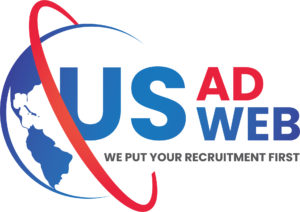DHS and DOL Publish Joint Notice of Proposed Rulemaking to Modernize Recruitment for H-2B Program – November 2018
From USADNEWS Volume XII, Issue 8
The Department of Homeland Security (DHS) and the Department of Labor (DOL) published a joint notice of proposed rulemaking (NPRM) on November 9, 2018, that seeks to modernize the recruitment requirements for the temporary employment of foreign workers under the H-2B visa program.
The current regulations, which were last changed in April 2015, require employers “to place two advertisements in a newspaper of general circulation for the area of intended employment that is appropriate to the occupation and the workers likely to apply for the job opportunity, at least one appearing in a Sunday edition.” The position of the DOL at that time was that newspapers of general circulation “remain an important source for recruiting U.S. workers,” especially for the positions typically sought to be filled through the H-2B program.
The newly proposed rule directly challenges that contention, citing a Pew Research Center survey that found that 79 percent of Americans search for jobs online, as opposed to 32 percent who still search via print media. The NPRM identified Americans’ increasing access to internet through smartphones and other digital devices as contributing to this online job search trend. DHS and DOL therefore concluded that print advertisements are an outmoded method of recruitment and jointly propose replacing the required print advertisements with electronic advertisements to be posted on the internet for no less than 14 days, “which the Departments believe will be a more effective and efficient means of disseminating information about job openings to U.S. workers.”
The Departments note that the switch to web advertising will be a cheaper recruitment method and save employers an estimated $9.44 million per year. The Office of Management and Budget (OMB) has reviewed the proposed rule and determined that although it represents a significant regulatory action, it is not economically significant; that is, it would not be likely to produce an annual effect on the economy of $100 million or more, nor would it otherwise adversely affect a sector of the economy.
The proposed rule does not specify any particular website that must be used to satisfy the recruitment requirement. Employers may select any site of their preference, so long as the job search site is appropriate to the position and job location and is easily accessible to job seekers at no charge. The Departments are currently soliciting comments on what, if any, criteria should be used to determine what is an appropriate website. Employers must retain screen shots of the web pages on which the ad appears, as well as screen shots of the web pages that link to the advertisement in order to demonstrate the ease of accessing the posting. For instance, an advertisement must either be clearly linked to from the website’s homepage, or readily discoverable through a job search function.
The DOL is considering the development of an integrated platform to automatically post H-2B advertisements on a variety of job search websites using the information provided to the DOL at the time of filing the H-2B temporary labor certification application.
The final rule will be implemented immediately, as the Departments plan to claim an exemption from the 30-day delayed effective date. However, they are incorporating a transition provision that will allow employers the option of continuing with print advertisements for any filings with a date of need prior to October 1, 2019. This is intended to accommodate any employers who have already purchased print advertisements or who need time to make adjustments in order to comply with the new requirement.
Although the Departments propose this transition to internet advertising in place of print advertising, they invite comments on whether electronic recruitment should be offered as an alternative as opposed to a complete replacement. The comment period ends December 10, 2018. It remains to be seen whether the same considerations will result in proposed changes to PERM advertising requirements.
